There’s money in mhealth apps.
The market for digital Healthcare was worth US$106 billion in 2019. From 2020 to 2026, it is anticipated to expand at a CAGR of 28.5%, doubling the market’s current size and will be worth close to 640 billion dollars by 2026.
The healthcare industry is constantly evolving and searching for new ways to improve patient care while reducing costs, and one area that has seen tremendous growth in recent years is mobile apps. Healthcare companies are now using mobile apps to provide various services to their patients, from bookings and appointments to health tracking and reminders.
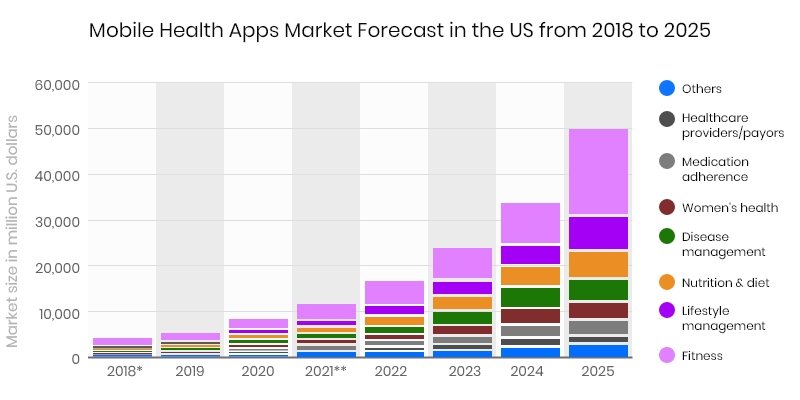
Healthcare organizations may now give their patients a more customized experience through mobile apps, which can result in higher revenue. The following recommendations will help you maximize the revenue prospect of mobile apps in the healthcare sector.
1. Create patient-focused apps.
2. Include applications in currently offered healthcare goods and services.
3. Encourage patients to utilize apps for routine checkups and monitoring.
4. Offer apps that assist patients in managing their health.
5. Use apps to remember, alert, and track patients.
6. Inform patients about healthy lifestyle changes and habits.
7. Encourage using apps through email, social media, and other methods.
8. Examine the app’s statistics to find areas that could use enhancement.
9. Optimize apps for improved engagement and user experience.
10. Evaluate outcomes and modify your marketing and growth plans as appropriate.
11. Encourage app use and keep users engaged with relevant information.
12. Monitoring analytics to see any problems and swiftly address them.
13. Include app features in additional online and offline advertising initiatives.
14. Look for chances to collaborate with third-party app suppliers.
15. Perform market research to identify the audience for app launches, upgrades, and much more.
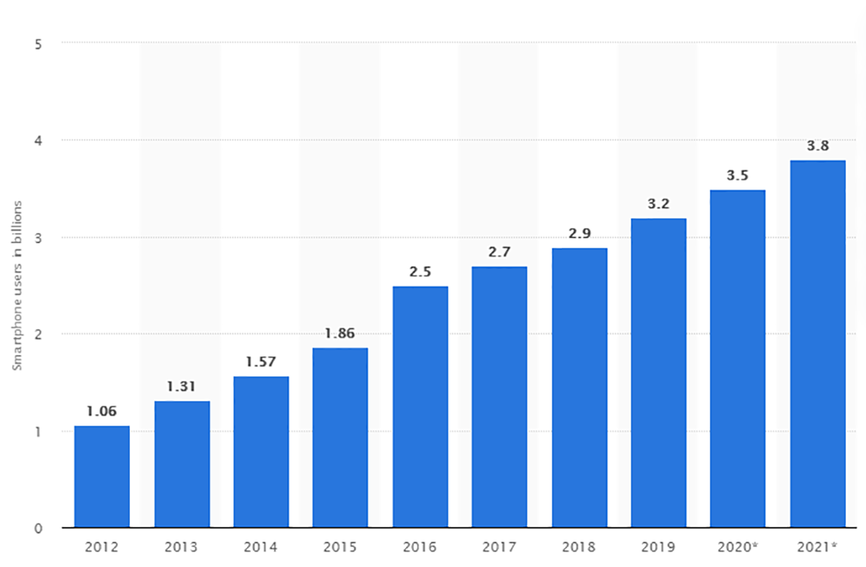
For more profound perspicuity, let’s look into practical and booming revenue models.
Revenue Models for Medical and Healthcare Mobile Apps
It is proven that the overall revenue generated by healthcare apps has rapidly increased in the post-pandemic environment. mHealth apps are currently in demand across all business sectors due to their enormous potential to improve patient outcomes at a low cost of care. For example, by reducing readmission rates and length of stay and by promoting patient adherence to prescription regimens, mHealth apps have contributed a practical possibility of saving money for hospitals.
A mobile healthcare app requires a lot of work and effort to make the necessary amount of earnings. Implementing a monetization strategy for mHealth apps appropriate for your business is also needed, in addition to confirming the target market.
Let’s look at different mHealth business methods that can increase the profit your mobile healthcare software generates.
1. The Freemium Model
This method of app monetization is the most popular. You, as the app’s owner, provide two variations of the same app, as the name implies –
- Free version – giving users access to fundamental features
- The Premium version – is a fee-based service that grants access to sophisticated and premium features.
This approach aims to get plenty of new users to check out the app’s fundamental features and persuade them to pay to access the more sophisticated ones if they like them. Users now have the chance to understand what they are paying for. However, you must add value for the users and persuade them to pay for anything you intend to offer.
Free tips to make your Freemium model better
- Give the full-featured software a free trial.
- Frequently remind users to update
- Analyze usage trends to find potential conversions.
2. Content Monetization
Practitioners of medical science must have a thorough understanding of their field and the most recent information. Anytime, anyplace learning is feasible because of mobile devices. However, not everything on the internet is guaranteed to be accurate, which is risky. So it’s very fair to charge for certified and premium material in your mHealth app.
For instance, a certain amount of content on your app will be free for doctors. All customers then need to do is register and pay a subscription fee to gain access to further verified content, which includes news on the newest technology, research, tips, and other information in the medical industry, that is updated frequently. All customers then need to do is register and pay a subscription fee to gain access to further verified content, which includes news on the newest technology, research, tips, and other information in the medical industry, updated frequently.
And after they subscribe, the payment is essentially ongoing.
You need a consistent content publication strategy and infrastructure to routinely create high-quality medical material if you want to get this model up and running.
3. In-app promotions
This app monetization method is popular because it is quick and straightforward. However, adverts can only be profitable if they don’t interfere with the primary user experience. As a result, the model’s success depends on only providing pertinent advertisements. By utilizing cutting-edge technology like RFID, NFC, or beacon, you can collaborate with regional mobile advertising partners who produce real-time targeted mobile ads for better on-the-spot user experiences. For instance, an app user receives a notification about savings on medications they frequently purchase while nearby a pharmacy with a beacon.
Banner advertisements, native ads, full-screen ads, and video ads are just a few of the ad types that businesses employ to provide for their users. You will be paid by each ad network based on the quantity and quality of your adverts under “cost per click,” “cost per install,” “cost per mile,” Etc.
4. App store purchases
Despite being somewhat sophisticated, this is one of the most lucrative & effective mHealth in-app revenue sources. In-app transactions typically take many different shapes. For example, in gamification apps, users can purchase additional lives or one-time cheats; in fitness apps, they show as extra workouts; in medical apps, patients can pre-pay visits, buy supplements, or have their prescriptions filled.
Another choice that apps might take into consideration is marketing. Your app can serve as a marketplace where you can offer customers things under your own or third-party brands—for instance, the Cure. Fit app in India offers smartphone goods (sports shoes, t-shirts, track pants, Etc.) for sale on their app.
5. Fees for registration and subscription
Most medical apps function as a platform to link patients and clinicians. Medical professionals, wellness experts, hospitals, and other businesses who want to use the app to fill their open time slots can pay a one-time registration fee to use it, which allows you to monetize your app. Secondly, if you have a solid clientele, you may advance this model by charging them a monthly fee to be registered and enable potential patients to make appointments with them.
Similarly, you can arrange a subscription model where customers can select a subscription option that suits their needs and pay a set fee (for example, monthly, quarterly, or yearly) to access the app.
6. Making money from accumulated data
Are you curious whether healthcare data monetization is feasible? The fantastic news is here! Although selling user data might not seem particularly friendly or ethical initially, it is a legal way to make money. Yes, there are various legal ways to sell amassed health information. The problem here, though, is anonymity. App owners can sell only non-personally identifiable data. It is possible to forecast trends and get insights from such anonymous data.
To begin with, you can use the app to monitor the lifestyle of obese patients who have gastric bypass surgery. The gathered information may be helpful to fitness professionals, pharmaceutical firms, or life insurance businesses.
7. Advertising
You can utilize a healthcare app for special offers or discount campaigns as a revenue model in the mobile health sector. All you need to make this technique effective is to identify goods and services that app users find enticing. Work with other parties prepared to advertise their services and goods to achieve this. For instance, you might promote a medical facility giving lab test savings with your mHealth app.
8. Sponsorship
In a nutshell, sponsorship is a combination of ad formats that promote a small number of businesses, or even just one company, within a single app. If your app has a sizable user base and a high degree of user engagement, think about how another business might profit by promoting its goods or services to your audience and how, in turn, it might profit your users.
The product and the partner’s objectives will determine how you should incorporate a sponsor into your app. Simple alternatives include putting the sponsor’s logo on the splash screen or footer, offering exclusive deals from the sponsor, displaying their advertisements, Etc. Sponsorship advertisements are typically more static, and you can customize them to the brand’s requirements. Identifying medical industry sponsors with similar target audiences is the key to successfully making this plan. This can be achieved by attending healthcare/medical conferences and trade shows.
9. Gamification in healthcare apps
Get inventive and include paid gamification components to draw consumers in. You may consist of games in medical apps to encourage users to perform their regular exercises or take their meds on schedule. You may make this more engaging by providing incentives like discounts, free medical advice, bonus points, Etc. Since games may occupy kids during treatment, this concept is more inviting to parents of young children.
Do you know?
North America dominated the global mHealth Apps market, with revenues of USD 7.44 billion in 2020 and is forecasted for continued growth.
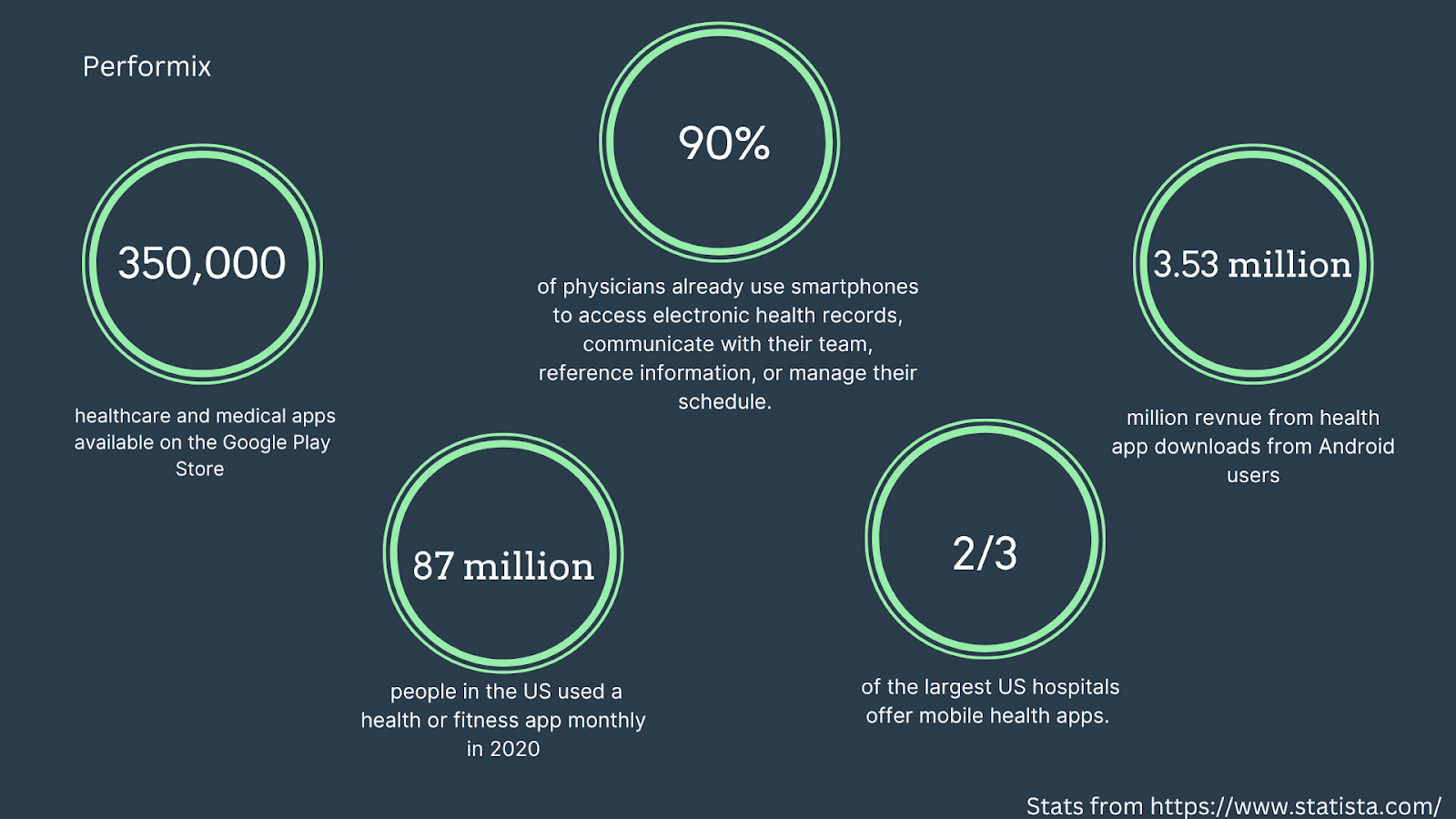
Innovative Healthcare Mobile Apps
As a mobile app development firm, Performix provides a wide range of healthcare software services and solutions. Here are a few innovative mobile health apps that could improve healthcare services, be user-friendly for everyone, including patients, doctors, pharmacies, and students, and bring in much profit.
1. Online consultation
The development of mobile healthcare apps should prioritize providing 24/7 consultations via HD video, voice, or chat, allowing patients to communicate with their doctors directly and comfortably from home.
2. Reminder Apps
Reminder apps are another common kind of smartphone application. Reminder applications encourage patients who take their prescriptions on time or follow the doctor’s directions following treatment. Doctors can increase the likelihood of a patient’s recovery by helping them pursue their prescription regimen by reminding them that they must take their meds at specified times.
3. Test Reports & e-Prescriptions
By allowing doctors to write prescriptions for patients immediately within the app, there is no need for paper prescriptions. Also, it makes it possible for labs to imprint the outcomes of medical tests performed directly in the patient’s module, making it easier for the patient and the doctor to obtain the reports.
4. Nutrition /Dieting Apps
A sizeable section of the populace is attempting to live healthier or reduce weight. As a result, many medical professionals concentrate on creating diet applications that will assist their patients in sticking to healthy eating and exercise regimens.
Thus, dietary apps may keep tabs on what patients consume, how much activity they do, and the long-term health objectives they must meet with guidance from dietitians and nutritionists.
5. Medical Records Apps
Patients must complete a form with their personal information when they visit the doctor. By allowing patients to submit paperwork from their homes via their smartphones, doctors can replace this antiquated paper-based approach with medical record applications which facilitates scheduling appointments and gives people more control over their health data.
6. Apps for mental health services
People use apps to combat complex difficulties, including drug addiction, anxiety, and mental health challenges. These cutting-edge applications can be customized to tackle distinct health issues for patients.
Patients can locate and connect with the assistance they require, including counselling, clinical trials for novel medications, and even psychiatrists, using applications for mental health services—people who prefer not to receive care in person but want high-quality care use this kind of program.
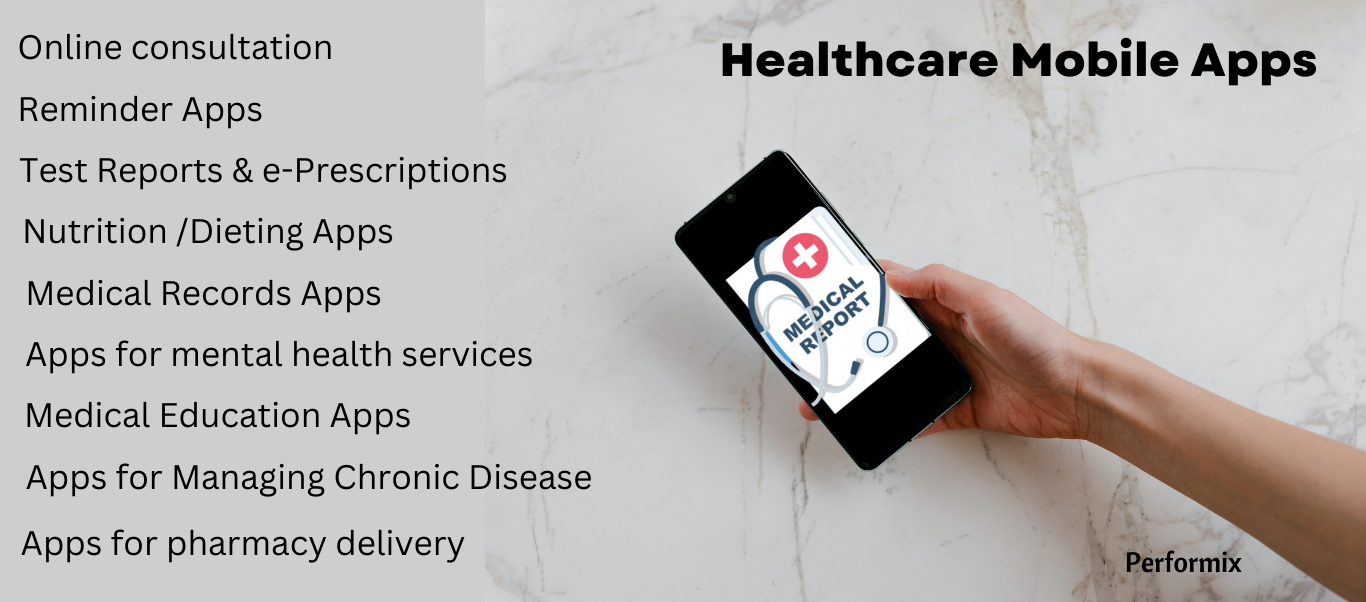
7. Apps for Women’s Healthcare
Doctors also use women’s healthcare apps to treat future mothers and women trying to get pregnant. By enabling users to keep track of their exercise routines, dietary goals, and the dates and times of their medical appointments, these applications make prenatal care for patients more convenient.
8. Medical Education Apps
To instruct aspiring medical professionals, some doctors use apps. Doctors may prepare future healthcare professionals by creating interactive training applications that address specific subjects like anatomy and clinical practice.
9. Apps for Managing Chronic Disease
The medical community is also now using apps for managing chronic diseases. Patients with chronic illnesses like diabetes, hypertension, or lupus depend on their doctors to ensure they receive the care they require.
With the use of chronic illness management applications, doctors may keep tabs on their patient’s health information and provide it to them in a handy way-making it possible for patients to consult with their doctors immediately and stay updated on their status.
10. Apps for pharmacy delivery
Using pharmacy delivery apps is another method doctors use apps to lower the cost of medical care. This software helps send prescription drugs directly to patients’ front doors rather than forcing them to visit their doctor’s office in person. As a result, people have greater freedom to fill their prescriptions and incur less expense when taking time off work.
Top Advice for growing the mhealth Apps user base
Your clients should be your central point of emphasis if you’ve been trying to increase the revenue of your mHealth app. I’ve compiled a few wise suggestions to assist you in growing a user base based on my experience creating countless health apps. If you abide by these recommendations, you will quickly develop a following of devoted clients.
1. Recognize your target market
Define your end consumers at the beginning by asking them who they are, what they want from an app, and how they want to use it. To do this,
- Make a market analysis using direct stakeholder interviews or online or offline surveys. This could assist you in obtaining precious and practical insights for your app.
- Study your rivals’ offerings and those of your competitors. Check the ratings and comments left by users on these apps to discover if the competition offers anything that users want. This gives you a profitable opportunity to offer something novel and in-demand and is thus a terrific approach to increase brand recognition.
- If your software is already available, seek user feedback and focus on fixing problems or consistently adding new features.
2. Improve customer service by including crucial characteristics
Leading mHealth apps offer consumers a smooth experience with utmost ease. While it’s always preferable to have distinctive & sophisticated features in your app, fundamental ones shouldn’t be overlooked. When creating apps, keep the following in mind:
- Keep the user interface straightforward, eye-catching, and interactive.
- When creating your app, keep in mind your intended users. For instance, your software should feature larger fonts and symbols if it is geared toward older users.
- To keep your patients interested, avoid utilizing complex medical terminology. Your app needs to be simple to use. Remember that patients won’t utilize an app if it requires them to spend more time than they already do on self-care. Patients won’t use your mobile app if they have to spend much time figuring out how it works.
- Provide quick access to all essential features, such as making or cancelling appointments, setting drug reminders, keeping records, Etc.
3. Your application must resolve an issue.
You are offering a remedy to an existing issue, or something novel and unseen on the market always makes sense. Build your consumer base quickly by becoming the “go-to” business.
4. Make sure the data of your clients are safe.
According to a study, worries about data security and privacy are one of the main obstacles to the use of mHealth platforms. Due to widespread data breaches, patients take more extraordinary precautions to protect their personal health information. Therefore, as the app’s owner, it is crucial for you to protect patient data and demonstrate your concern for your users.
Among the ways to do this are:
- Study the regulatory compliances that apply to you and make sure your app complies with all local standards like HIPAA, GDPR, Etc.
- For increased security, enable multi-factor authentication.
- Whether the data is at rest or is in transit, always encrypt it.
- Create safe network connections.
- Run vulnerability checks frequently to look for bugs and loopholes, and act immediately on the results.
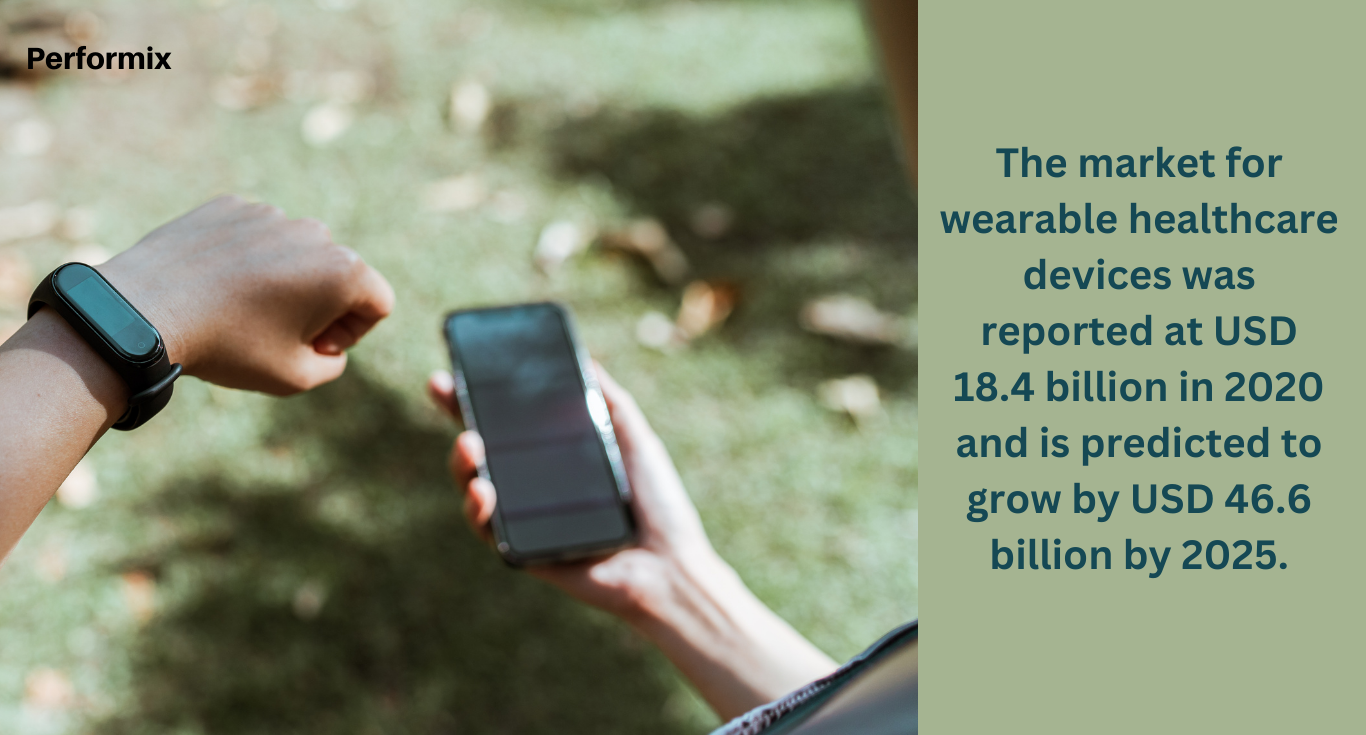
5. Adapt to wearable technology
The rapid growth of smartwatches, fitness trackers, and other wearable devices provides a fantastic chance to create a healthcare app that is wearable technology compatible.
Users of this platform can monitor their real-time vitals, such as heart rate, blood sugar level, sleep patterns, Etc., which helps them become more involved in and knowledgeable about their health.
6. Avoid shocking charges
Roughly half of the smartphone users stop using mHealth applications after installing them, according to research published in the Journal of Medical Internet Research (JMIR)- because of hidden charges, lack of interest, or security and privacy concerns.
Therefore, it’s ideal always to make it apparent to users which services are available for free and which ones cost money. Not everyone is opposed to paying for sophisticated and practical features in an app.
7. Regularly update your app.
Maintain constant, seamless operation to keep your users curious. Fix found bugs right away. Moreover, as soon as you can, make your program interoperable with a new hardware generation or operating system.
8. Review your marketing plan.
Make a marketing action for your app to increase app downloads. To get people to notice you, start by boosting your brand. You can advertise your mHealth app on several channels, such as increasing your social media presence, presenting your brand’s narrative through guest posts, sending out email newsletters, using SEO, and running website promotions.
Why wait to create an app for your medical/healthcare business when you might have acquired extensive knowledge on healthcare apps and everything else?
Create Your Own Health App Right Now!
Self-development of a unique health app might be difficult and time-consuming. To complete this task, you must choose a healthcare app development specialist.
Partner with Performix
Our talented application developers have extensive knowledge of artificial intelligence (AI), the Internet of Medical Things (IoMT), and other cutting-edge technologies, allowing you to create patient-centric or hospital-centric or student-friendly platforms. Discuss your app idea, and we’ll help you through development, launch, and post-launch. Call us to talk about your health app concept, and watch as we grow your business to new levels of profitability.






